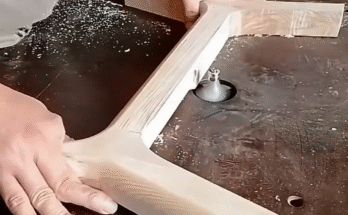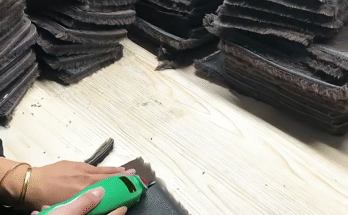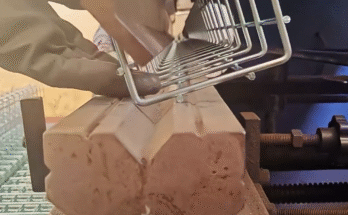Carving intricate line frames on marble is a delicate art that combines precision, patience, and the right tools. Whether for decorative panels, architectural elements, or artistic pieces, understanding each step is crucial for achieving clean, sharp, and beautiful results. This guide will walk you through the essential stages of creating stunning line frames on marble.
Step 1: Design and Preparation 📐
Before any tools touch the marble, meticulous planning is required.
- Conceptualize the Design: Sketch your desired line frame pattern. Consider the scale, complexity, and how it will complement the marble piece.
- Prepare the Marble Surface: Ensure the marble surface is clean, dry, and free of any dust or debris. A smooth, well-prepared surface is essential for accurate marking.
- Transfer the Design:
- Stenciling: Create a stencil of your design and trace it onto the marble using a soft pencil or a fine-tipped marker.
- Carbon Paper/Graphite: Use carbon paper or graphite paper placed between your design printout and the marble, then trace over the lines.
- Direct Drawing: For simpler designs, you can carefully draw directly onto the marble with a ruler and pencil.
- Secure the Marble: Place the marble on a stable, non-slip surface, ideally a workbench with clamps or a non-slip mat, to prevent movement during carving.
Step 2: Selecting and Preparing Tools 🔪
The right tools are paramount for precision marble carving.
- Choose Your Chisels: Select a variety of chisels, including V-groove chisels for sharp lines, flat chisels for wider channels, and possibly round or U-shaped chisels for curved elements. Carbide-tipped chisels are highly recommended for marble due to its hardness.
- Mallet: Use a carving mallet (often made of wood, plastic, or rawhide) to strike the chisels. Avoid metal hammers, which can damage the chisel handles.
- Sharpening: Ensure all chisels are razor-sharp. Dull tools can slip, damage the marble, and make the work much harder. Use sharpening stones or a sharpening system appropriate for your chisel type.
- Safety Gear: Always wear safety glasses or goggles to protect your eyes from flying chips. Gloves can protect your hands, and a dust mask is advisable, especially when dry carving, to avoid inhaling marble dust.
Step 3: Initial Incision (Scoring) 📏
This is the crucial first cut that defines your lines.
- Position the Chisel: Place the V-groove chisel precisely on one of your marked lines, holding it at a shallow angle (e.g., 30-45 degrees).
- Gentle Taps: Begin with very light taps of the mallet on the chisel. The goal is to score a shallow, consistent line along your entire design. This initial score acts as a guide and prevents the chisel from wandering.
- Follow the Line: Carefully follow all the lines of your frame design, ensuring the initial incision is continuous and accurate. Take your time; precision here will dictate the final outcome.
Step 4: Deepening the Lines ⛏️
Once the initial scores are in place, you can gradually deepen the frame lines.
- Repeated Passes: Make multiple passes along each scored line, gradually increasing the depth of the cut.
- Consistent Angle: Maintain a consistent chisel angle and mallet force to ensure uniform depth and width of your carved lines.
- Remove Waste: As you deepen the lines, small chips of marble will be removed. Periodically brush away these chips to keep your work area clear and your lines visible.
- Work in Sections: For complex frames, it can be helpful to work on one section or one segment of the line at a time before moving to the next.
Step 5: Refining and Shaping the Frame 🖼️
This step involves fine-tuning the lines and potentially shaping the edges of the frame.
- Clean Edges: Use the V-groove chisel to clean up any ragged edges or unevenness in your carved lines.
- Wider Channels (Optional): If your design calls for wider frame elements, use a flat chisel to carefully widen the channels between your initial V-groove cuts. Work slowly, removing small amounts of material at a time.
- Detailing: For any intricate corners or junctions, use smaller, finer chisels to achieve sharp, clean details.
- Check for Consistency: Regularly step back and examine your work from different angles to ensure the lines are straight, consistent in depth, and symmetrical.
Step 6: Finishing and Polishing ✨
The final steps bring out the beauty of the carved marble.
- Clean the Surface: Thoroughly clean the marble surface and the carved lines to remove all dust and debris. You can use a soft brush or compressed air.
- Sanding (Optional): For a smoother finish within the carved lines or on the surrounding surface, you can carefully sand with progressively finer grits of sandpaper (wet sanding is often preferred for marble) or specialized diamond polishing pads.
- Polishing: Apply a marble polishing compound to the entire surface, including the carved lines, and buff with a soft cloth or a polishing wheel. This will enhance the natural luster of the marble and make your carved lines stand out.
- Sealing (Recommended): Apply a marble sealer to protect the surface and the carved lines from stains and moisture. Follow the manufacturer’s instructions for application and curing.
Tips for Success 💡
- Patience is Key: Marble carving is not a rushed process. Take your time, especially during the initial scoring and deepening stages.
- Practice on Scraps: If you’re new to marble carving, practice your techniques on a scrap piece of marble before working on your final project.
- Work in Good Light: Ensure your workspace is well-lit to clearly see your lines and the progress of your carving.
- Listen to the Stone: Pay attention to how the marble responds to your tools. Different types of marble may have varying hardness and grain patterns.
By following these steps, you can transform a simple slab of marble into a work of art adorned with beautifully carved line frames.



